Canon EOS 7D Review
Canon EOS 7D
We take a look at Canon's new 18-megapixel APS-C flagship
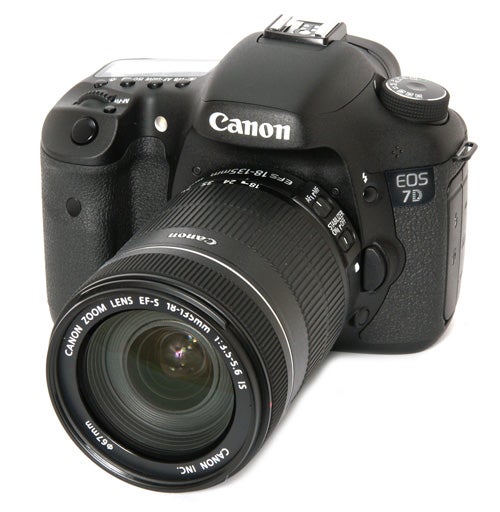
Verdict
Key Specifications
- Review Price: £1500.00
The past few years has seen a rapid growth in popularity of consumer digital SLRs, and a corresponding expansion of the ranges of cameras available from the main manufacturers. A couple of years ago Canon’s DSLR range consisted of a triple-digit “entry-level” model such as the EOS 350D or 400D, a double-digit model for advanced amateurs and semi-professionals such as the EOS 30D or 40D, and then it was on to the professional single-digit models such as the EOS 5D and EOS-1D models.
This year in spite of the difficult economic situation the main manufacturers have expanded their consumer DSLR ranges in both directions. Nikon has introduced the D3000 and D5000, as well as the new D300s, and Sony has added a whole swathe of new models to its already impressive range. For its part Canon has introduced the EOS 1000D as a new entry-level model, while the EOS 500D and EOS 50D now share the middle ground. However it is the top end of the consumer range that is attracting the most attention, because Canon has just launched a new semi-pro flagship camera, the eagerly awaited EOS 7D.
The 7D fills a gap that had opened up in Canon’s range between the 15.1-megapixel, EOS 50D at £700, and the 21.1-megapixel full-frame EOS 5D Mk II at £1,800. With an 18-megapixel APS-C CMOS sensor and a price tag of £1,500 body-only the 7D hits the mark perfectly. It offers enough of an advantage over the 50D to attract the serious enthusiasts to upgrade, while its build quality performance and versatility don’t fall much short of the 5D MkII, offering an alternative for those who can’t quite justify the leap to full-frame.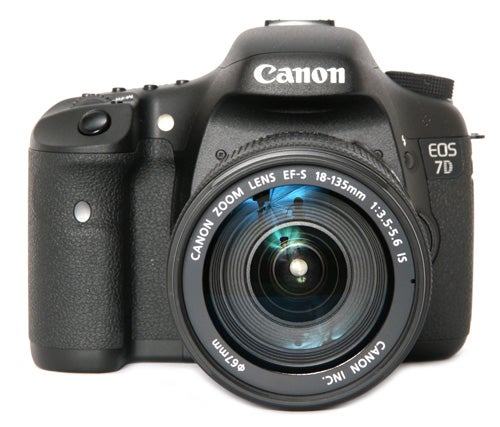
Many commentators have characterised the 7D as an upgrade of the 50D, but I’d describe it more as a 5D MkII Lite. In terms of size and weight it is certainly closer to its full-frame sibling. It is a few millimetres narrower and shorter, but its body-only weight is actually 10g heavier. The body shape and overall feel of the camera is reminiscent of the 5D MkII, and the build quality is comparable as well, with a tough magnesium alloy body shell and full environmental sealing.
The 7D has to compete with some very strong rivals at the top end of the market. Its main competitor is of course the Nikon D300s, but the Sony Alpha A700 and Pentax K-7 are also serious contenders. Canon has cut no corners, and has gone all-out to give the 7D the kind of features and specification that will tempt buyers away from rival systems.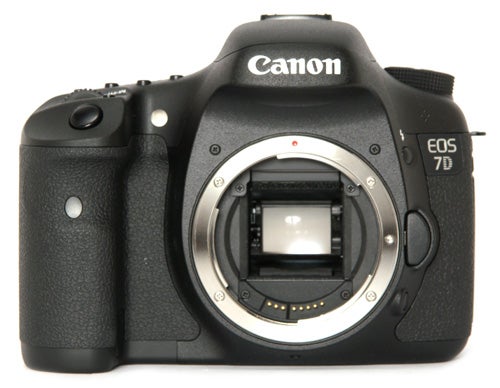
The external components of the camera make an excellent initial impression. The superb 3-inch monitor screen is the same that will be appearing on the new EOS-1D MkIV. It has a viewing angle of about 170 degrees in every direction, and the gap between the surface of the display and the scratch-resistant toughened glass cover has been filled in with a special optically neutral plastic. This means that the image on the display appears to be much closer to the surface, and it is virtually free from glare and internal reflection even in direct sunlight. It is brighter and sharper than any other camera monitor I’ve seen.
The quality of the monitor is matched by the newly designed pentaprism viewfinder, which is also superb. With 100 percent frame coverage and 1x magnification it is one of the clearest, largest and brightest viewfinders I’ve seen, certainly comparable with the Nikon D3X and the Sony A900, which were my previous favourites. The viewfinder has an internal transparent LCD overlay, so focus points, framing marks, grid lines, AF points and even an electronic artificial horizon with pitch and roll level can be overlaid on the viewfinder without having to swap out focusing screens.
One glance at the control layout is enough to confirm that the EOS 7D isn’t aimed at beginners. It has four dials, three switches, a joystick and no less that 17 buttons, not counting the shutter release. I’ve used pretty much every digital SLR on the market including Canon’s entire current range, and even I had to spend time with the instruction manual to find out what some of the controls do. I have to admit I’ve always preferred Nikon’s control layout to Canon’s, but despite its complexity I actually found the 7D quite easy to get to grips with. The ergonomic design of the body and control layout is excellent, and despite its weight the camera is comfortable to hold and operate. It has the usual dual-dial and multi-function buttons, but there is also an on-screen graphical interface for main shooting and exposure settings. It even has a full-auto shooting mode, although the idea of anyone buying a camera like this for their holiday snapshots is mildly distressing.
The complexity of the controls reflects the versatility of the camera. The graphical interface includes the option to customise the function of nearly every control on the camera, from the shutter button to the control dials. I don’t believe I’ve ever seen such a level of customisability (is that even a word?) before. The main menu system is also comprehensive, but it is very well laid out and easy to navigate using the two control dials or the joystick. As usual there is an exhaustive list of custom settings, including expanding the ISO range to 12,800.
The 7D uses the same Picture Styles system of customisable pre-sets that is present on all of Canon’s latest high-end cameras, but with an enhanced level of control. There are nine pre-sets, each of which have four adjustable parameters; sharpness, contrast, saturation and colour tone for the colour pre-sets, each with nine adjustment increments, and with the last two replaced by filter effect and toning effect for the monochrome pre-set.
One nice touch is the Raw/JPEG button on the left of the viewfinder. If you’re shooting in either Raw or JPEG modes this button allows you to quickly switch to the other mode instantly, very handy if like me you tend to take a “reconnaissance by fire” approach to exposure adjustment. You can take a number of test shots in JPEG mode, and then switch to Raw mode for the final shot, saving a lot of memory card space. The 7D has three sizes (17.9, 8 and 4.5 megapixels) at two compression settings for JPEG shooting, as well as three image sizes in Raw mode (17.9, 10.1 and 4.5 megapixels). It can also shoot in all three Raw sizes plus large JPEG.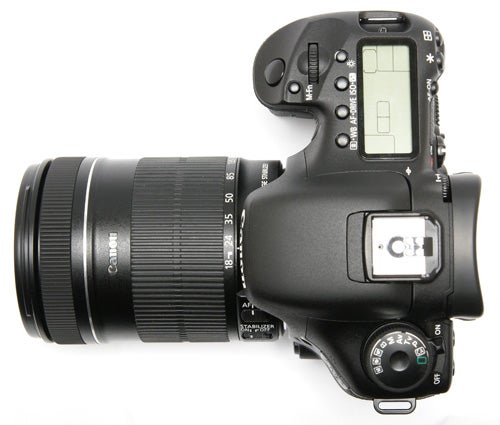
The EOS 7D is the latest Canon digital SLR to feature high definition video recording capability, in this case taken pretty much as a whole from the EOS 5D MkII. The 7D can record in full 1080p HD at 24, 25 or 30fps with either automatic or manual exposure. Audio recording is either in mono through the built-in microphone or in stereo via an optional stereo microphone which plugs into a socket under one of the body plugs on the left side of the camera. I suspect there are going to be a lot of people who bought the EOS 5D MkII for its HD video recording, who are now kicking themselves that they didn’t wait a few months for this camera.
The DIGIC 4 processor is at the heart of all Canon’s latest DSLRs. The EOS 500D has one, the EOS 50D has one, as does the EOS 5D MkII. The new EOS-1D MkIV professional camera has two of them, and so does the EOS 7D, so as you can imagine it has some fairly impressive performance figures. It can take a picture within about a quarter of a second of being switched on, and in single shot mode it has effectively zero shutter lag, and can shoot as fast as you can press the shutter until the memory card is full. In continuous shooting mode it is nothing short of astonishing, shooting at 8fps in all quality and size settings including Raw + JPEG mode. The Nikon D300s can manage 8fps, but only with the addition of an external power pack. The 7D’s image buffer is big enough, and the data processing fast enough for 126 shots at this speed in JPEG mode, 15 in Raw or 6 in Raw + JPEG.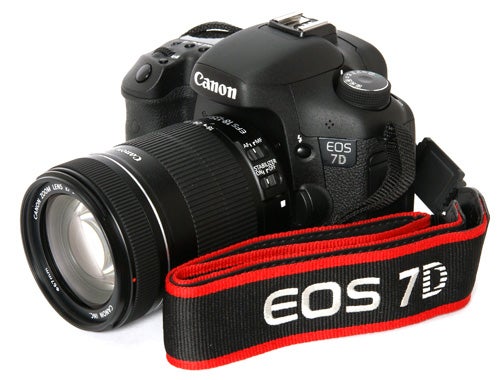
The 7D features a new autofocus system, which is always a bit of an event for Canon. It is, to say the least, impressive. It has 19 f/2.8 cross-type sensors arranged in a broad diamond pattern across the central area of the frame, which can be used either for a wide area AF mode, in selected groups for small area AF, or singly for point or centre. It is a fantastically adaptable system, and clever too. There is a custom function that allows the selected AF point to rotate if you turn the camera between vertical and horizontal. Whatever the mode, focusing is incredibly fast and reliably accurate, with one exception. In live view mode the camera has the option to use its contrast detection AF system, a rather poor single-zone affair which is both slow and inaccurate. If only Canon could come up with a way to use phase detection AF in live view mode, as Sony has.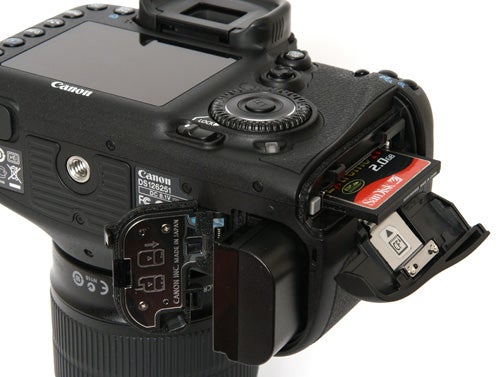
You’re probably getting the impression by now that I quite like the EOS 7D, but I’ve saved the best bit until last, because here I mention picture quality. In every respect, the 7D performs brilliantly, coping with low light, high contrast, fast moving subjects and bright colours. I can honestly say I can’t remember when I’ve been more impressed by the results from a camera, except possibly for the EOS 5D MkII, but then I think we all knew that one was going to be good.
In noise control alone the 7D is head and shoulders above almost anything else I’ve tested including some full-frame cameras, producing usable shots at 6400 ISO, and even the extended 12,800 ISO maximum is far from useless. At lower ISO settings the picture quality is pretty much flawless. One possible concern with such a high resolution APS-C sensor is of course dynamic range, but here too the 7D excels. The standard JPEG results do have some highlight clipping in high-contrast lighting, but it is possible to pull this back by at least half a stop in Raw mode. The 7D has an Auto Lighting Optimiser feature which helps to preserve shadow detail.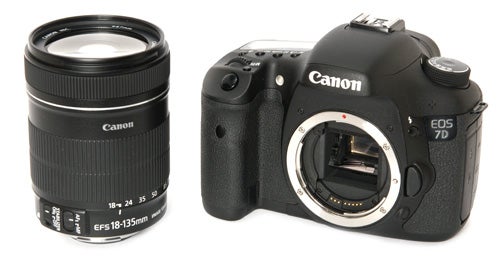
All in all I’m massively impressed by the EOS 7D. Canon has set out to make the best APS-C camera on the market, and in my opinion it has succeeded most admirably. Admittedly £1,500 is a lot of money for a camera, but this is the sort of kit you could earn a living with. I would have no qualms about shooting a big wedding using this camera, although I think I’d put a better lens on it. The 18-135mm f/3.5-5.6 EF-S that was supplied with my review camera, and is available as a kit lens for the 7D, is frankly not very good, with significant chromatic aberration and corner vignetting that even the camera’s automatic peripheral lighting correction didn’t completely cure.
”’Verdict”’
The Canon EOS 7D is without doubt one of the best cameras currently available, offering fantastic build quality, lightning fast performance and superb image quality in virtually any conditions. It is more expensive than its main rivals, but it’s worth the extra for a camera this good.
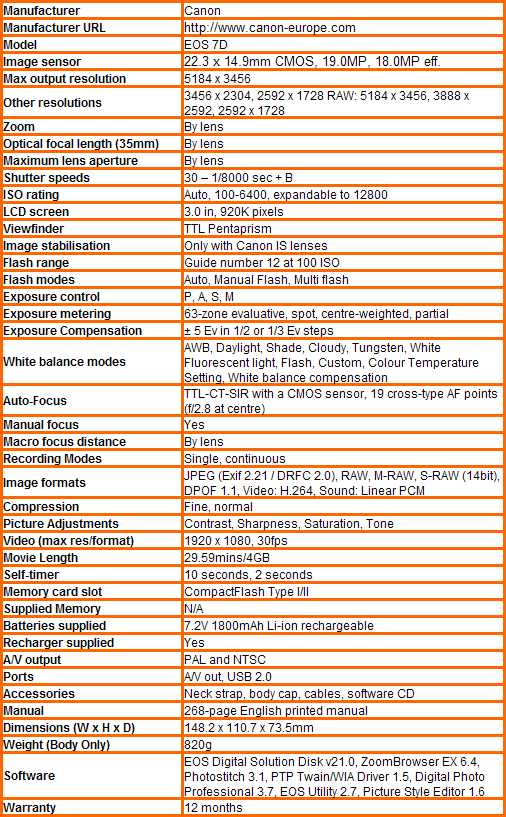
”Over the next few pages we show a range of test shots. On this page the full size image at the minimum and maximum ISO settings have been reduced to let you see the full image, and a series of full resolution crops have taken from original images at a range of ISO settings to show the overall image quality. These pictures were taken indoors using reflected natural light ”
—-

This is the full frame at 100 ISO.
—-
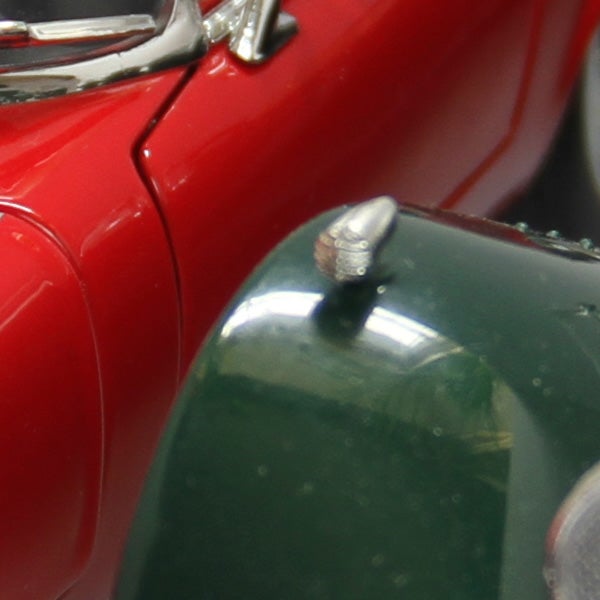
The live view contrast detection AF system has missed a bit here, but the image quality is flawless.
—-
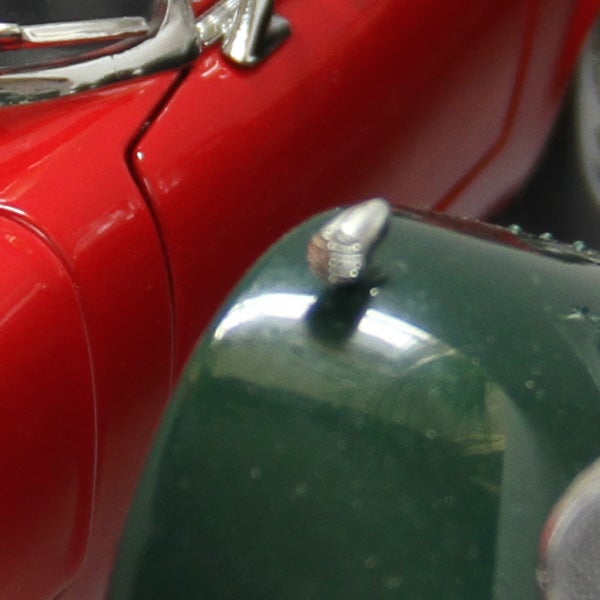
200 ISO…
—-
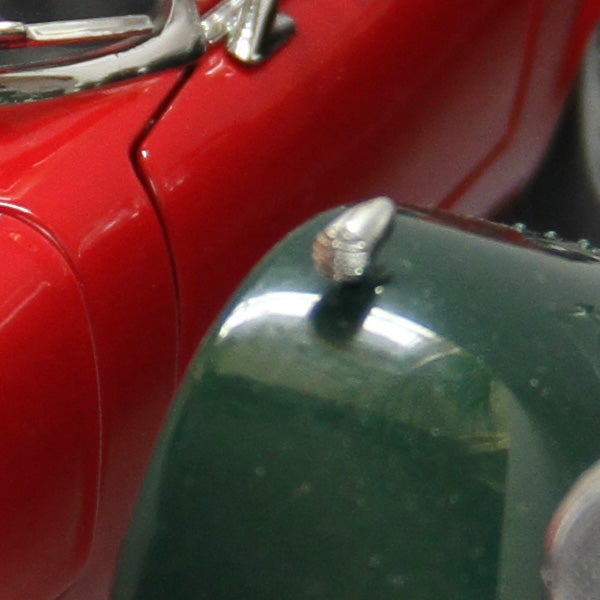
400 ISO…
—-
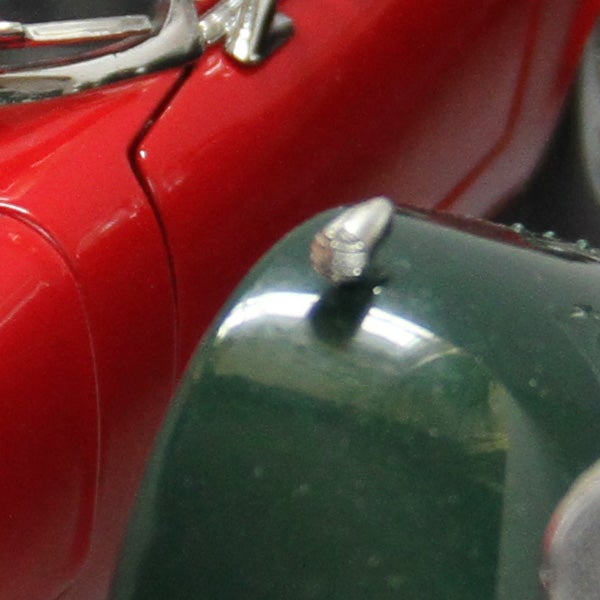
800 ISO. There’s a hint of mid-tone noise, but only just.
—-

Again a light burr of noise at 1600 ISO, but this is a perfectly usable shot.
—-
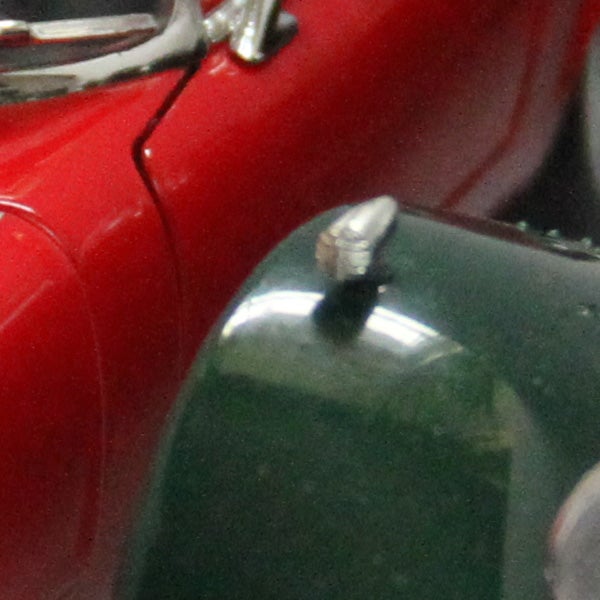
Still no serious problems at 3200 ISO. The noise is there, but it’s smooth and well controlled.
—-
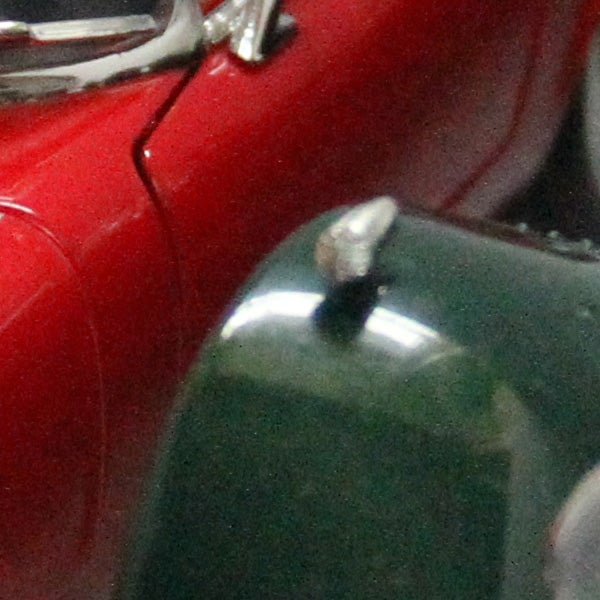
Noise is quite visible at 6400 but it looks like film grain. Tonal gradients are still smooth there’s still plenty of detail.
—-
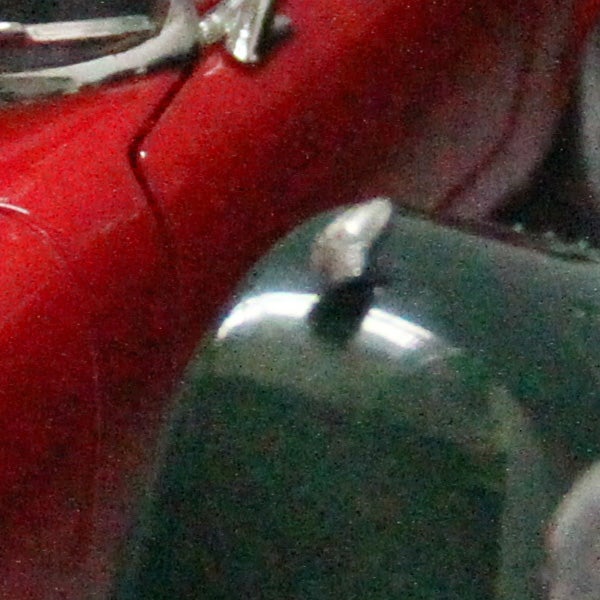
Contrast is fading at 12,800 ISO, but this is far from hopeless.
—-
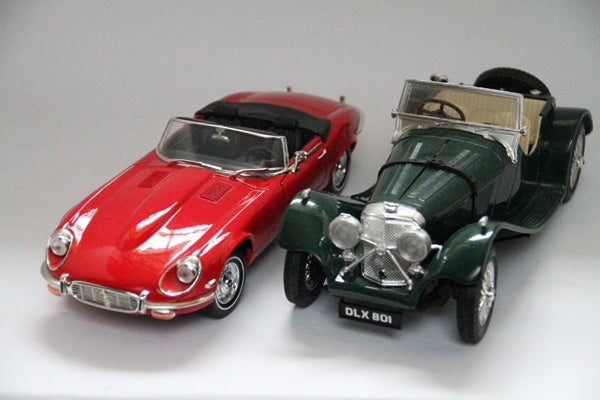
This is the full frame at 12,800 ISO.
—-
”A range of general test shots are shown over the next two pages. In some cases, the full size image has been reduced for bandwidth purposes, and a crop taken from the original full resolution image has been placed below it to show the overall image quality. Some other pictures may be clicked to view the original full-size image. ”
—-
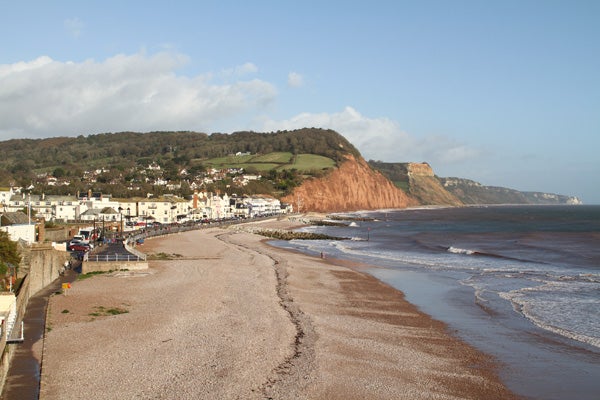
Here’s my usual DSLR test shot of Sidmouth seafront for comparison with other cameras. Unfortunately there’s no full-size download this time, because the file size was too big. Hopefully we can remedy that later, so please check back here in a few days.
—-
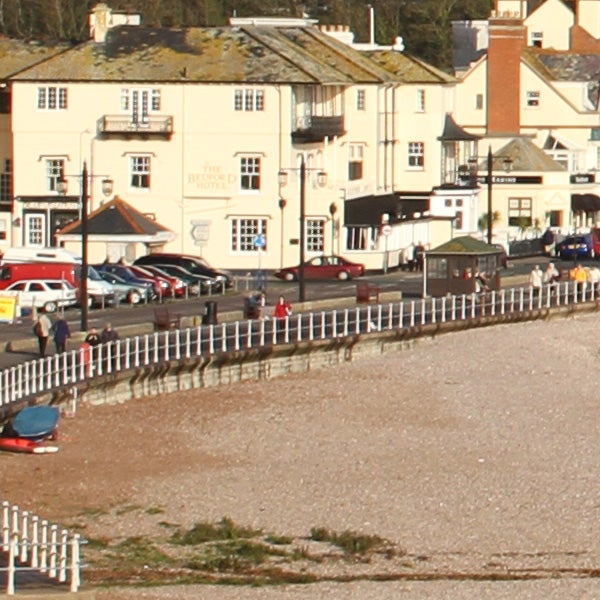
Compare this full-scale crop of the above image with the EOS 5D MkII, or with the Nikon D300s. I’d love to see what the 7D can do with a better lens.
—-

This is a crop from the edge of the above image. At f/11 and partially zoomed in, a good lens shouldn’t show this much CA.
—-
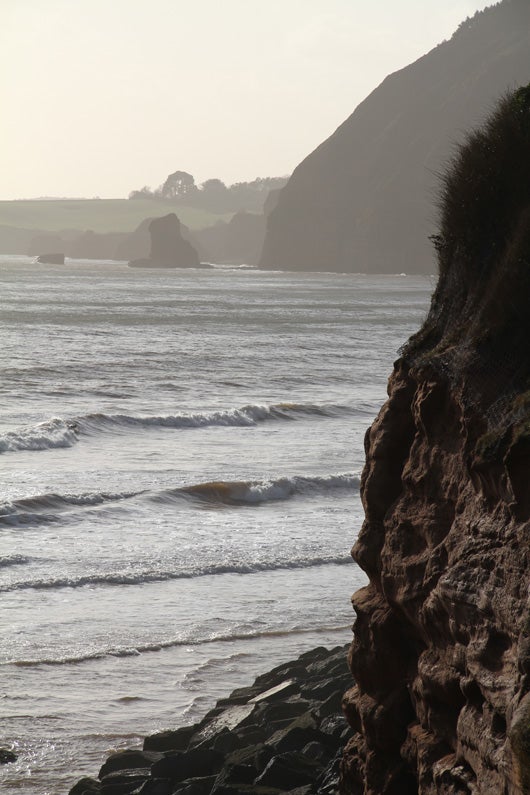
The exposure system copes well even when shooting into the sun.
—-
”Here are some general test shots to help evaluate the camera’s overall image quality, including the zoom range of the lens. Some pictures may be clicked to download the full size original image. ”
—-
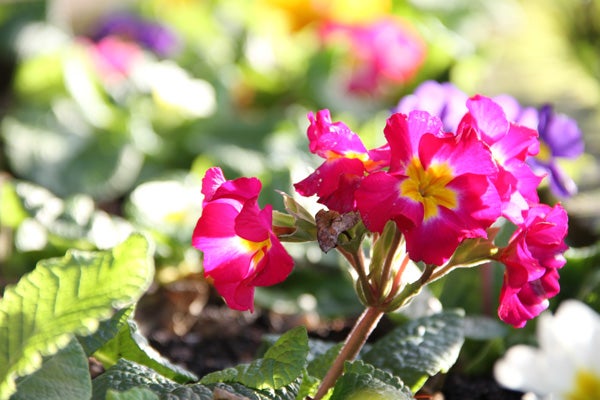
Colour rendition is bright and clear.
—-
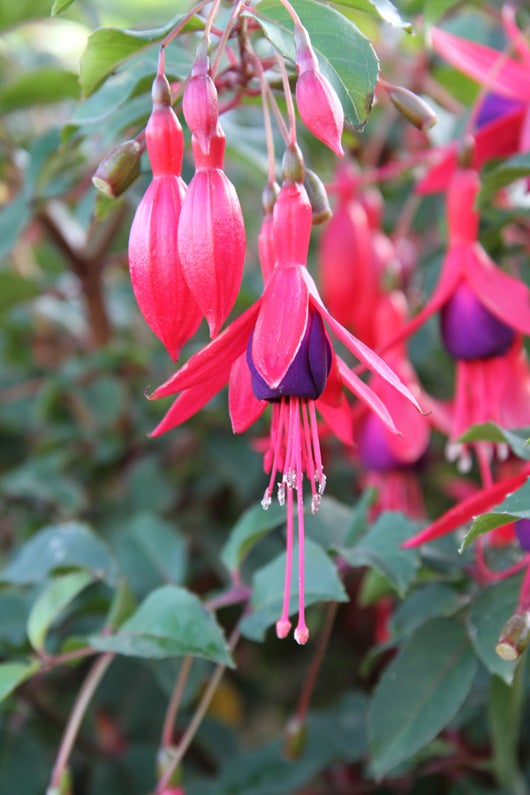
I thought these only came out in Spring?
—-
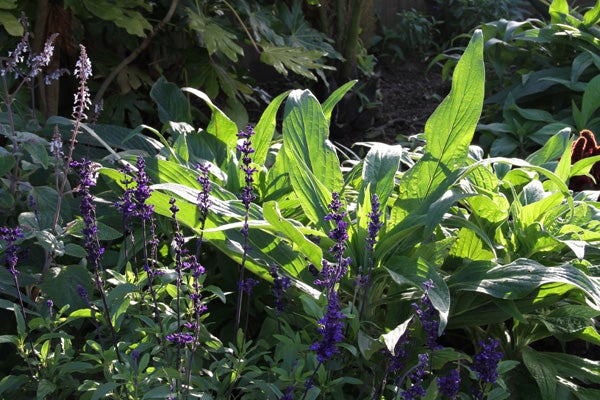
These compressed-for-web JPEGs don’t really do justicwe to the colours.
—-
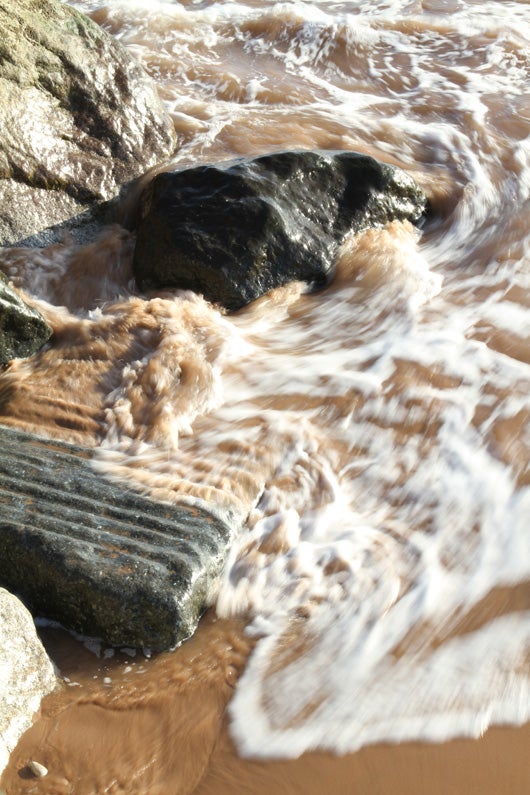
Getting creative with a tripod.
—-
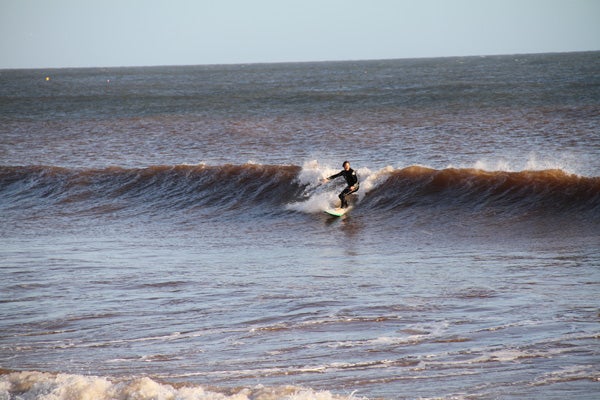
The AF system catches and tracks even fast moving distant subjects.
—-
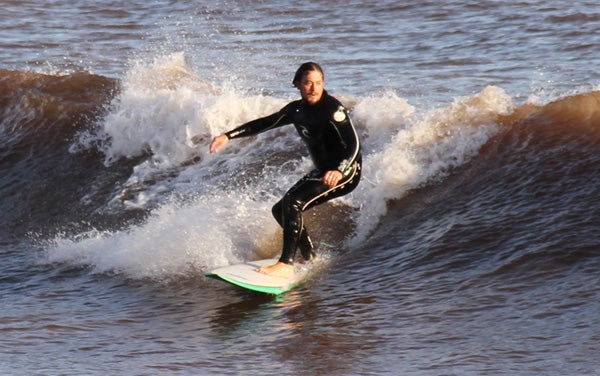
This is a crop from the shot above.
—-
Trusted Score
Score in detail
-
Value 9
-
Image Quality 10
-
Build Quality 10
Features
| Camera type | Digital SLR |
| Megapixels (Megapixel) | 18 Megapixel |
| Optical Zoom (Times) | Not Applicablex |
| Image Sensor | CMOS |
| LCD Monitor | 3 in |
| Flash modes | Auto Flash, Accessory Shoe, Built-in Flash |
| Video (max res/format) | 1920 x 1080 |
| Memory card slot | CompactFlash (CF) Card, CompactFlash, Microdrive |

